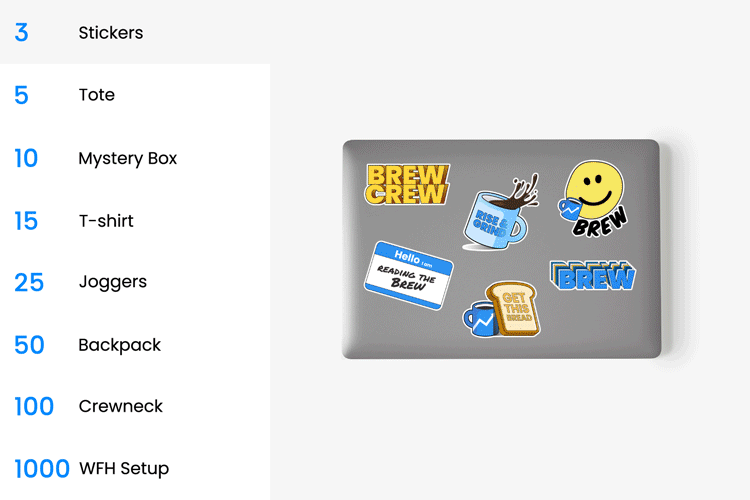It’s Wednesday. Happy New Year! Tech Brew’s Patrick Kulp spent the waning weeks of 2023 trying to figure out if we’re still going to be writing about AI nonstop this year. (Spoiler alert: It appears so.)
In today’s edition:
—Patrick Kulp, Annie Saunders
|
|
Getty Images
For those chasing the generative AI hype train, it’s been a year of frantic experiments.
Scared of being left behind by what could be a transformative tech wave, companies have been jumping on the large language model bandwagon, prodding the tech industry out of a post-pandemic slump.
In recent months, however, some experts have pointed to signs that generative AI could be headed for what research firm Gartner famously calls the “trough of disillusionment”—the period in every hype cycle when a tech fails to live up to outsized initial expectations quickly enough (or at all).
So what comes next for generative AI? We checked in with a handful of tech leaders in an attempt to assess the AI vibes and where it feels like the tech is headed.
Keep reading here.—PK
|
|
Tired of wondering where most of your money…well, went? The truth is, you don’t need increased funds, automation, or another line of credit to fix this problem—you need a set of habits to turn your spending around for good.
Enter YNAB, a fan-favorite spending app that has helped millions find clarity and confidence in their future. No guilt or second-guessing, just better decision-making that can add up to real results financially and emotionally.
Focus on your goals instead of what’s holding you back and try YNAB free for 34 days (no credit card required). Your future self will thank you.
|
|
Julie Wang
How would you describe your job to someone who doesn’t work in tech?
We’re chopping up the freight train and making each container capable of routing itself from Point A to Point B. Why, you may ask? Intermodal freight—those shipping containers you see coming in on big boats—is overtaking bulk freight as the moneymaker, and this sort of traffic is typically going shorter distances in smaller batches. So it doesn’t make as much sense to build up one long train going across the country. By splitting the train up, we’re able to provide a better service and open up corridors where trains were losing business to trucks. Also, because of the modular architecture, we’re able to both electrify the vehicle and greatly reduce the stopping distance. Finally, by making them autonomous, now you have something akin to a self-routing packet on a network. It’s a safer, greener, and more flexible architecture.
What I’m doing is figuring out the self-driving bit. Our problem in some ways is much simpler than solving the full self-driving problem—we don’t make left or right turns, and the rail is a much more tightly controlled environment. But in other ways, it’s harder—our stopping distance is higher, requiring longer-range sensors, and we have to deal with an entirely different set of “roadside” signs and signals. There’s also a lot of work inherent in making a safety-critical vehicle—things like ensuring our processes don’t fail in unsafe ways and have the correct expected behavior. It’s an interconnected challenge that spans many disciplines of engineering.
What’s the most compelling tech project you’ve worked on, and why?
I’ve had the good fortune to work on a lot of really compelling tech projects. Right out of college, I joined SpaceX as a firmware engineer and got to see my code go to space as part of the vehicle flight computer, the telemetry recorder, the radio receiver, and more. I also worked on the fairing recovery project and rode a very fast boat with a very big net trying to catch a fairing. I also wrote code for the space lasers project. I didn’t think it could get cooler, but then I got into trains.
Keep reading here.
|
|
TOGETHER WITH J.P. MORGAN
|
|
Solutions for scaling your biz. No matter what stage your business is in, J.P. Morgan has the tech you need to achieve your business goals. Manage your spending + reporting, facilitate capital transfers + secure payments, and manage your accounts with their digital tech. Get platforms and solutions to grow your biz.
|
|
Stat: 18%. That’s how much smog-forming emissions dropped in 10 states this past summer, Grist reported, citing EPA data, thanks to a federal provision known as the “Good Neighbor” rule.
Quote: “Getting my life blown up on Twitter is probably the most momentous thing that has ever happened to me. Five years later, barely anyone remembers it.”—Sarah Jeong, in The Verge, bids farewell to the harassment wrought by Twitter (which we are now forced to call X)
Read: The hybrid-car dilemma (The Atlantic)
Better decision$: Create better $$$ habits with YNAB and start spending with zero guilt and stress. Get the app to learn how to spend purposefully and create your own money plan with a free trial.* *A message from our sponsor.
|
|
|
Share Tech Brew with your coworkers, acquire free Brew swag, and then make new friends as a result of your fresh Brew swag.
We’re saying we’ll give you free stuff and more friends if you share a link. One link.

Your referral count: 2
Click to Share
Or copy & paste your referral link to others:
emergingtechbrew.com/r/?kid=9ec4d467
|
|
ADVERTISE
//
CAREERS
//
SHOP
//
FAQ
Update your email preferences or unsubscribe
here.
View our privacy policy
here.
Copyright ©
2024
Morning Brew. All rights reserved.
22 W 19th St, 4th Floor, New York, NY 10011
|
|







